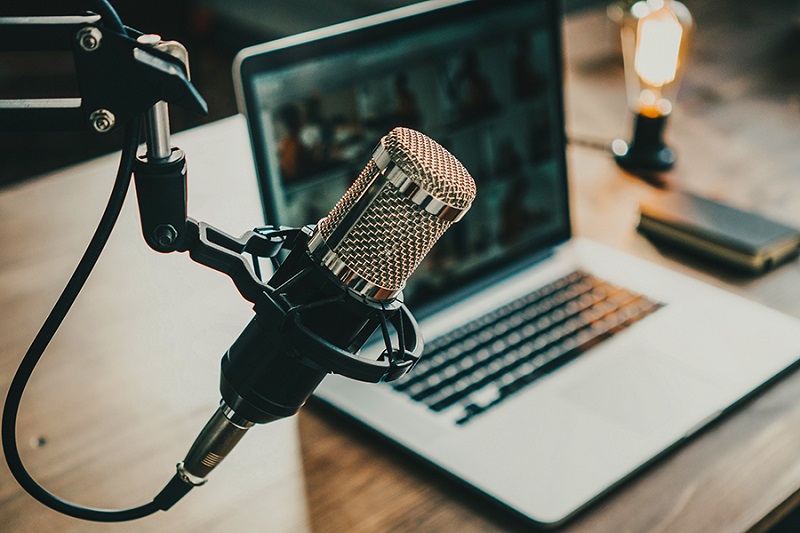Insights into Iran’s Thriving Podcasting Industry
According to IDEA, an exclusive report shedding light on Iran’s burgeoning podcasting industry. With a comprehensive statistical analysis of production, consumption, and audience preferences, this report reveals intriguing insights into the world of Persian podcasts.
Diverse Podcast Landscape
Persian podcasts have proliferated across various categories, with religious, educational, and news topics leading the way in terms of production. However, it’s noteworthy that not all these podcasts enjoy wide audiences. Surprisingly, the primary audience share for Persian podcasts is attributed to the realms of psychology, education, and health. A striking 96% of Persian podcasts are devoid of revenue models, being offered to listeners free of charge.
Castbox’s Remarkable Share
An intriguing aspect of the Iranian podcast scene is the remarkable dominance of the “Castbox” platform compared to its competitors. A prominent research and analytical center in the field of communications and media, a total of 9,067 Persian podcasts have been produced globally. These podcasts have collectively amassed an estimated 696 million listens. Furthermore, the number of platforms hosting Persian podcasts has surged to 43.
Content Trends
Podcasts covering religious, educational, news, art, and health topics comprise the top five content categories, out of 23, in terms of production levels. This shift is noteworthy because, in the Persian calendar year 1399 (equivalent to 2020), religious, educational, and news categories did not top the production charts.
Consumption Patterns
Contrary to production statistics, news, religion, and art categories have a smaller share in overall podcast consumption in Iran. The lion’s share of podcast consumption is attributed to the education, psychology, and health categories.
Production Trends
582,273 podcasts were produced in the past year, compared to 664,960 in the Persian calendar year 1400. Despite a potential decline in the past year, the general trend in Persian podcast production has been upward. Factors such as internet disruptions and societal dynamics may have influenced this recent dip.
Leading Producers
When it comes to the number of Persian podcasts produced, “Raadio Farda” tops the list with 5,000 episodes. “Mihan TV” and “Radio Denj” follow closely with 3,549 and 2,972 podcasts, respectively.
Most Popular Podcasts
Among the most popular Persian podcasts, “Raadio Rah with Mojtaba Shakouri” claims the top spot with a staggering 50 million listens. This podcast uniquely combines psychology, art, storytelling, and education. The podcast “B-Plus” ranks second with a theme focusing on culture and society, boasting 34 million listens. Other highly listened-to podcasts include “Jafekari,” “Rokh,” “Ketabbaz,” “Solh-e Daron,” and “Ravaq,” among others.
Diverse Landscape
A surprising revelation is that out of 9,067 Persian podcast titles, 1,936 consist of single episodes, representing nearly 20% of all Persian podcast titles that are not currently active. Moreover, 369 titles have been listened to fewer than 10 times, accounting for nearly 4% of all Persian podcast titles, with less than 3,700 total listens.
Revenue Models
Within the Iranian podcast industry, a staggering 96% of all Persian podcasts do not employ revenue models and remain free to access. Less than 2% of Persian podcasts adopt sponsorship and advertising revenue models, while approximately 2% follow a freemium model.
Market Share Leaders
A striking development is the dominance of Castbox, which claims over 80% of the market share among Persian podcast hosting and distribution platforms. Shenoto captures more than 15% of the market, while Tehran Podcast and Namlik each hold less than 3%.
Changing Market Dynamics
Over the years, market dynamics have witnessed shifts, with Namlik and Tehran Podcast exchanging market shares compared to 1999. Castbox’s market share has also experienced significant growth.
This report underscores the growth and development of Iran’s podcast industry, reflecting the audience’s increasing affinity for audio-centric content. In addition, the rise of audiobooks in recent years suggests their potential to supplant physical cultural products like printed books.
The Iranian podcasting landscape is rapidly evolving, and its future is poised for innovation and diversification as it continues to captivate audiences with a wide array of engaging content.






No Comment! Be the first one.